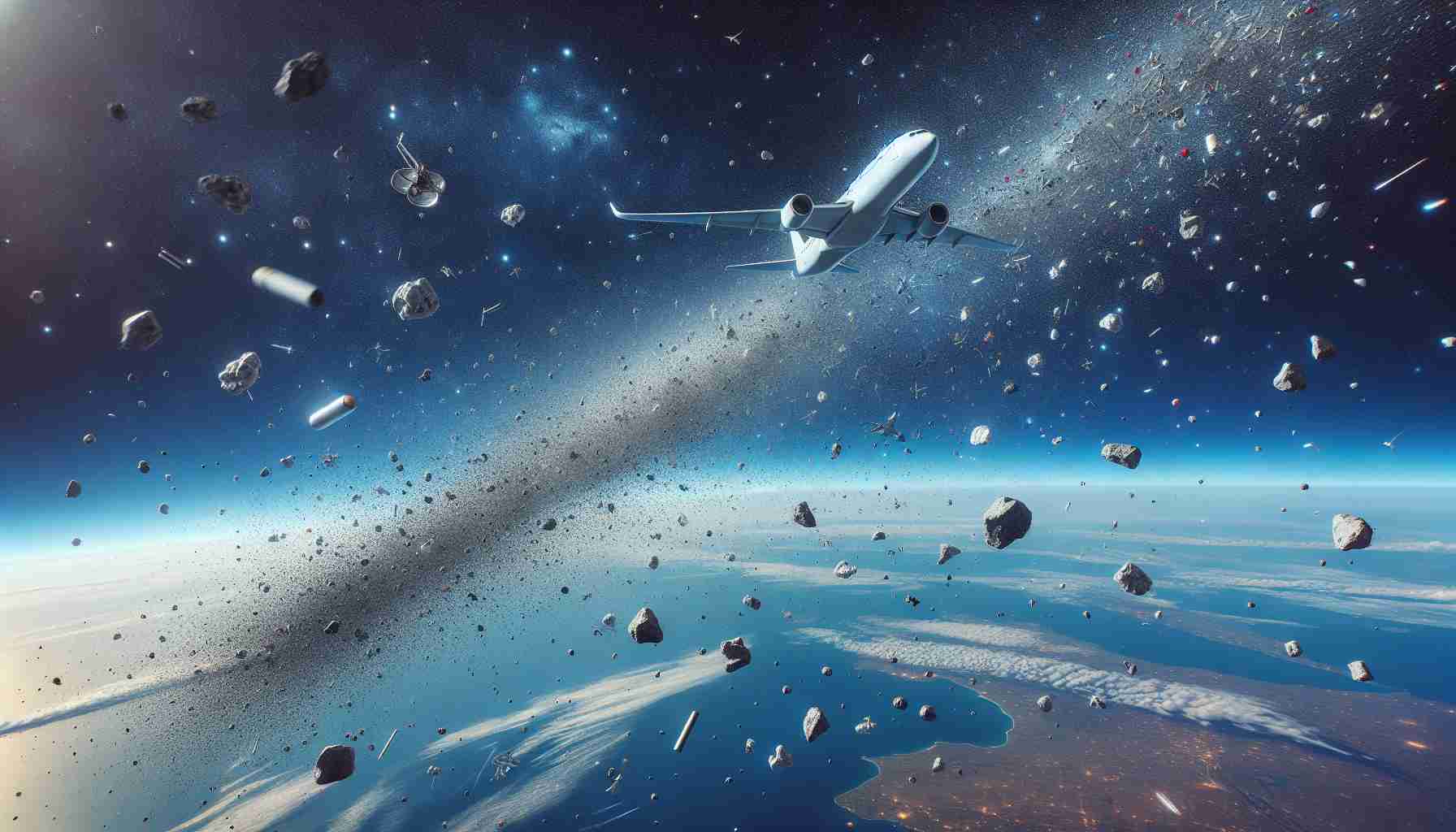- The risk of space debris falling into aircraft paths is increasing, especially in densely populated airspaces.
- Recent incidents, such as the SpaceX Starship fallout, have highlighted the potential impact on aviation operations.
- Airspace closures due to debris can cause major delays, affecting both airlines and the global economy.
- Over 2,300 rocket bodies are currently in orbit, amplifying the urgency for effective debris management.
- Experts call for coordinated global efforts from space agencies and the private sector to address space debris challenges.
- Innovative technologies and stricter regulations are essential to ensure the safety of both air and space travel.
Imagine soaring through the sky, blissfully unaware of the cosmic dangers lurking above. As the number of space missions skyrockets, space debris is becoming a troubling reality that could disrupt our everyday flights. Recent studies reveal that commercial aircraft are at an increasing risk from falling debris, particularly in busy airspaces like the Northeastern U.S. and Northern Europe, where the chance of an uncontrolled reentry has surged to 26% annually.
Events like the SpaceX Starship incident in January 2025, where debris rained over the Atlantic near the Turks and Caicos, have jolted the aviation industry and highlighted how quickly airspace can be affected, resulting in delays and closures. Such incidents serve as urgent reminders that while the likelihood of collision remains low, the fallout could be catastrophic.
The wormhole of issues doesn’t just end with safety—it extends to our global economy. Airspace closures prompted by falling debris lead to significant flight delays and operational headaches for airlines. As a staggering 2,300 rocket bodies orbit Earth, the call for better monitoring and debris management grows louder. Experts urge a coordinated global response involving space agencies and private sectors to tackle this burgeoning problem.
The takeaway? As we look up to the stars and dream of new celestial adventures, we must also deploy innovative technologies and stricter regulations to ensure our skies remain safe. The future hinges on our ability to harmonize air travel and space exploration—before it’s too late.
Harnessing the Skies: The Looming Threat of Space Debris to Aviation!
Understanding Space Debris and Its Impact on Air Travel
As space exploration intensifies, the accumulation of space debris poses a significant risk to commercial aviation. The recent increase in the number of space missions, particularly from private enterprises, has led to concerns about the dangers presented by falling debris to aircraft flying at cruising altitudes.
Insights into Space Debris Risks
Recent analyses highlight that areas with high air traffic, such as the Northeastern U.S. and Northern Europe, face alarming statistics. The annual risk of uncontrolled reentry from space debris in these regions is estimated to be as high as 26%. This ongoing threat requires urgent attention from both space agencies and aviation authorities.
Market Overview: The Economic Impact of Airspace Closures
1. Economic Costs: The repercussions of falling debris extend beyond safety concerns to economic impacts. Airspace closures due to debris lead to significant operational disruptions for airlines, with potential financial losses amounting to millions each year. In 2024, estimated losses due to flight delays reached over $500 million globally.
2. Innovations in Monitoring: Cutting-edge technologies are being developed to enhance space debris tracking. Companies like LeoLabs and Astroscale are pioneering debris detection systems and removal technologies, aiming to mitigate the adverse effects on aviation.
3. Future Trends: The projected growth of the space industry suggests a continuing rise in debris. The number of satellites in orbit is expected to triple over the next decade, underscoring the urgent need for comprehensive debris management strategies.
Key Questions Answered
1. What are the main sources of space debris threatening aviation?
The primary contributors to space debris are defunct satellites, spent rocket stages, and fragments from previous collisions and explosions in space. These remnants often remain in orbit for years, posing risks to both spacecraft and airplanes.
2. How are authorities responding to the growing threat of space debris?
Currently, agencies like NASA and ESA are enhancing tracking systems and conducting research on debris mitigation techniques. However, a coordinated global effort involving both the public and private sectors is deemed essential to address the systemic issues related to space debris management.
3. What technologies are being developed to handle space debris?
Innovations such as robotic arms for debris capture, lasers for fragment deflection, and automated tracking systems are being explored. Furthermore, public-private partnerships are emerging to foster collaboration in debris removal initiatives.
Final Thoughts: Navigating the Future of Aviation and Space Exploration
In the pursuit of advancing space exploration, we must prioritize safety in our skies. The call for advanced monitoring technologies, stringent regulations, and international cooperation is louder than ever. The future of aviation depends significantly on our ability to manage and reduce the risks associated with space debris.
For more insights on space exploration and aviation safety, check out NASA’s official site and learn more about their space debris initiatives.













